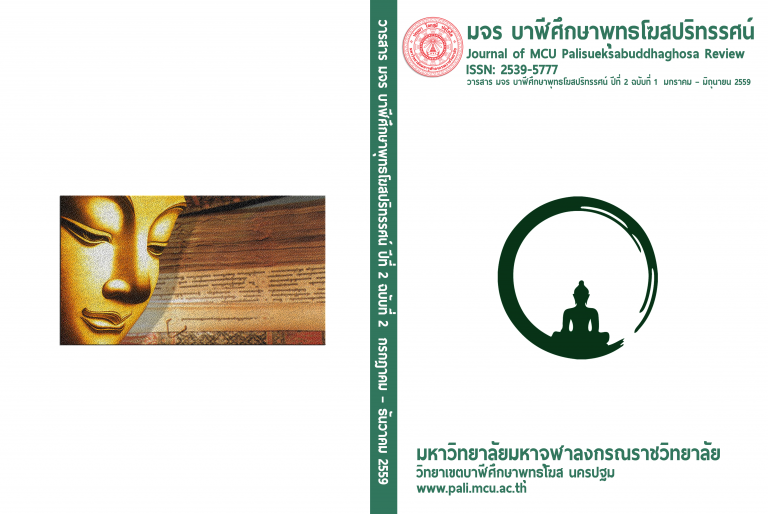พุทธวิธีการสอนให้บรรลุธรรมตามลำดับวิปัสสนาญาณแก่ผู้ฟังและผู้ปฏิบัติธรรม
Main Article Content
บทคัดย่อ
This article was intended to present a way to teach insight of the Buddha. He chose various techniques of teaching by taking into account the mental state and readiness of the listeners, considering situations currently facing to lead to wisdom, which consists of the Three Common Manners with mindfulness and observing. The teaching is flexible depending on the audiences’ knowledge, abilities, potentialities. In addition, the Buddha’s personality and moral impresses confidences. He uses the intuition to check availability and set a clear goal, then persuading to practice, encouraging with cheerful, digesting difficult subjects to be easy with the metaphor. He knows the right timing to teach in accordance with habits, characters and faculties of audiences. It is important that he got enlighten by himself, then taught others so that the listener can learn and practice in order to achieve enlightenment. In worldly level, he used reasoning for teaching and meditating on the level of experience to see what truly are, miracles was employed to guide the listener for opening Dhamma’s eyes. The teaching focuses on the enlightenment, abandoning from delusion, hatred and greed and the freedom and true happiness of individual and society.
Article Details
เนื้อหาและข้อมูลในบทความที่ลงตีพิมพ์ในวารสาร มจร บาฬีศึกษาพุทธโฆสปริทรรศน์ถือเป็นข้อคิดเห็นและความรับผิดชอบของผู้เขียนบทความโดยตรงซึ่งกองบรรณาธิการวารสาร ไม่จำเป็นต้องเห็นด้วย หรือร่วมรับผิดชอบใด ๆ บทความ ข้อมูล เนื้อหา รูปภาพ ฯลฯ ที่ได้รับการตีพิมพ์ในวารสาร มจร บาฬีศึกษาพุทธโฆสปริทรรศน์ถือเป็นลิขสิทธิ์ของวารสาร มจร บาฬีศึกษาพุทธโฆสปริทรรศน์หากบุคคลหรือหน่วยงานใดต้องการนำทั้งหมดหรือส่วนหนึ่งส่วนใดไปเผยแพร่ต่อหรือเพื่อกระทำการใด ๆ จะต้องได้รับอนุญาตเป็นลายลักอักษรจากวารสาร มจร บาฬีศึกษาพุทธโฆสปริทรรศน์ก่อนเท่านั้น


